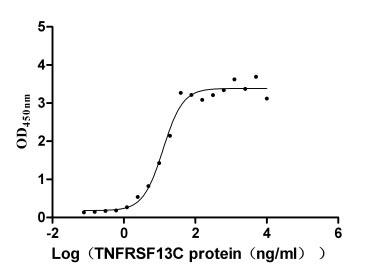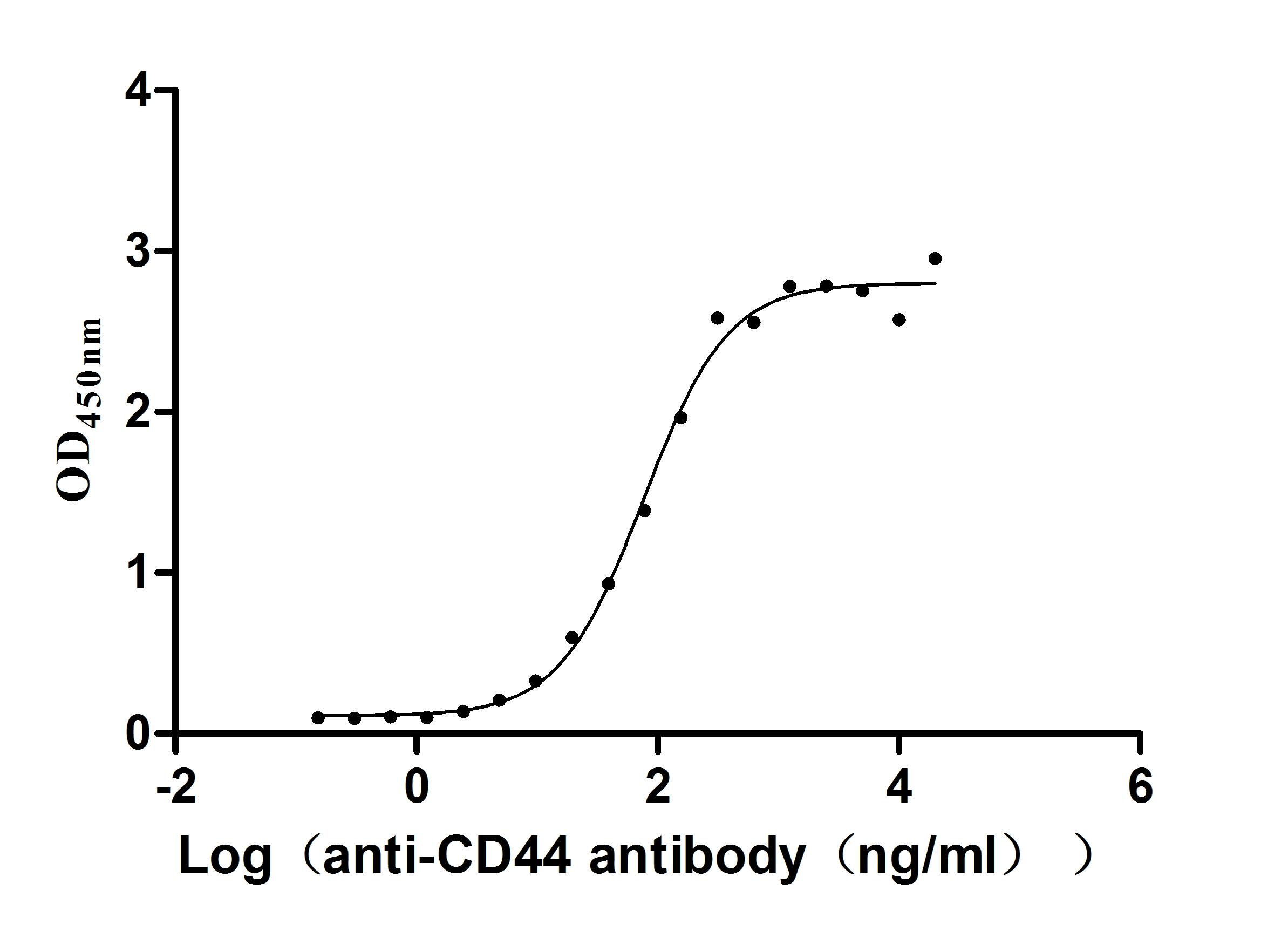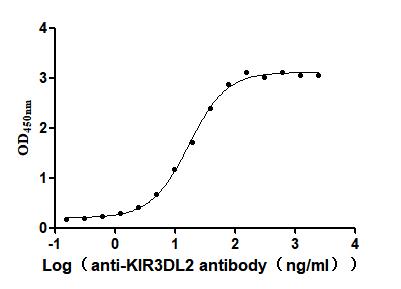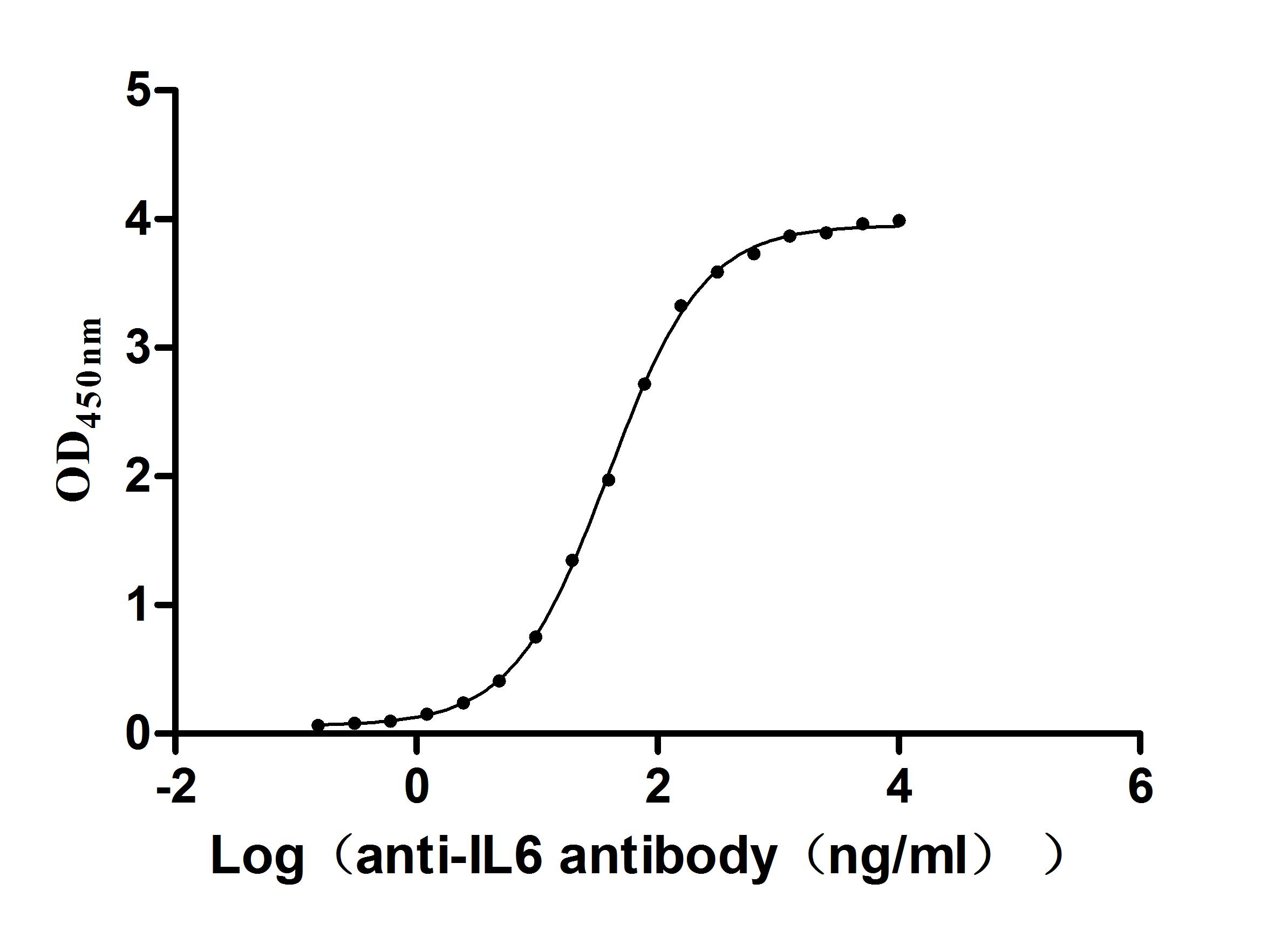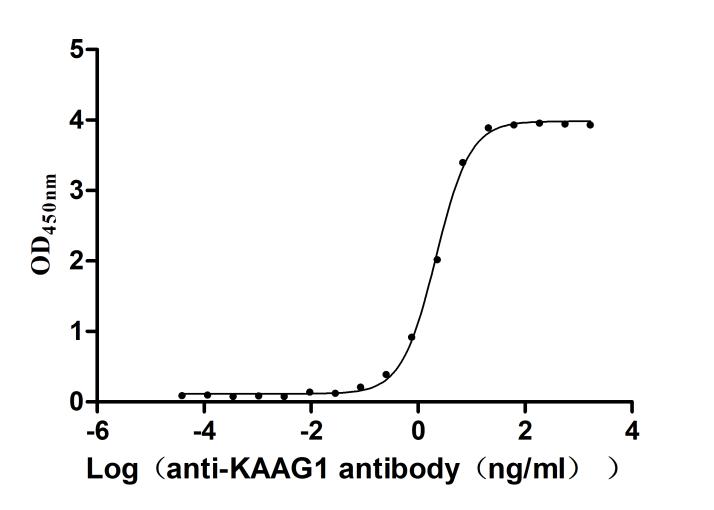Recombinant Mouse Non-specific lipid-transfer protein (Scp2)
-
货号:CSB-YP020856MO
-
规格:
-
来源:Yeast
-
其他:
-
货号:CSB-EP020856MO
-
规格:
-
来源:E.coli
-
其他:
-
货号:CSB-EP020856MO-B
-
规格:
-
来源:E.coli
-
共轭:Avi-tag Biotinylated
E. coli biotin ligase (BirA) is highly specific in covalently attaching biotin to the 15 amino acid AviTag peptide. This recombinant protein was biotinylated in vivo by AviTag-BirA technology, which method is BriA catalyzes amide linkage between the biotin and the specific lysine of the AviTag.
-
其他:
-
货号:CSB-BP020856MO
-
规格:
-
来源:Baculovirus
-
其他:
-
货号:CSB-MP020856MO
-
规格:
-
来源:Mammalian cell
-
其他:
产品详情
-
纯度:>85% (SDS-PAGE)
-
基因名:
-
Uniprot No.:
-
别名:Scp2; Scp-2; Non-specific lipid-transfer protein; NSL-TP; EC 2.3.1.176; Propanoyl-CoA C-acyltransferase; SCP-chi; SCPX; Sterol carrier protein 2; SCP-2; Sterol carrier protein X; SCP-X
-
种属:Mus musculus (Mouse)
-
蛋白长度:Full length protein
-
表达区域:1-547
-
氨基酸序列MPSVALKSPR LRRVFVVGVG MTKFMKPGGE NSRDYPDMAK EAGQKALEDA QIPYSAVEQA CVGYVYGDST SGQRAIYHSL GLTGIPIINV NNNCSTGSTA LFMAHQLIQG GLANCVLALG FEKMERGSIG TKFSDRTTPT DKHIEVLIDK YGLSAHPITP QMFGYAGKEH MEKYGTKVEH FAKIGWKNHK HSVNNTYSQF QDEYSLEEVM KSKPVFDFLT ILQCCPTSDG AAAAILSSEE FVQQYGLQSK AVEIVAQEMM TDLPSTFEEK SIIKVVGYDM SKEAARRCYE KSGLTPNDVD VIELHDCFSV NELITYEALG LCPEGQGGTL VDRGDNTYGG KWVINPSGGL ISKGHPLGAT GLAQCAELCW QLRGEAGKRQ VPGAKVALQH NLGLGGAVVV TLYRMGFPEA ASSFRTHQVS AAPTSSAGDG FKANLVFKEI EKKLEEEGEQ FVKKIGGIFA FKVKDGPGGK EATWVVDVKN GKGSVLPNSD KKADCTITMA DSDLLALMTG KMNPQSAFFQ GKLKIAGNMG LAMKLQNLQL QPGKAKL
-
蛋白标签:Tag type will be determined during the manufacturing process.
The tag type will be determined during production process. If you have specified tag type, please tell us and we will develop the specified tag preferentially. -
产品提供形式:Lyophilized powder
Note: We will preferentially ship the format that we have in stock, however, if you have any special requirement for the format, please remark your requirement when placing the order, we will prepare according to your demand. -
复溶:We recommend that this vial be briefly centrifuged prior to opening to bring the contents to the bottom. Please reconstitute protein in deionized sterile water to a concentration of 0.1-1.0 mg/mL.We recommend to add 5-50% of glycerol (final concentration) and aliquot for long-term storage at -20℃/-80℃. Our default final concentration of glycerol is 50%. Customers could use it as reference.
-
储存条件:Store at -20°C/-80°C upon receipt, aliquoting is necessary for mutiple use. Avoid repeated freeze-thaw cycles.
-
保质期:The shelf life is related to many factors, storage state, buffer ingredients, storage temperature and the stability of the protein itself.
Generally, the shelf life of liquid form is 6 months at -20°C/-80°C. The shelf life of lyophilized form is 12 months at -20°C/-80°C. -
货期:Delivery time may differ from different purchasing way or location, please kindly consult your local distributors for specific delivery time.Note: All of our proteins are default shipped with normal blue ice packs, if you request to ship with dry ice, please communicate with us in advance and extra fees will be charged.
-
注意事项:Repeated freezing and thawing is not recommended. Store working aliquots at 4°C for up to one week.
-
Datasheet :Please contact us to get it.
靶点详情
-
功能:Plays a crucial role in the peroxisomal oxidation of branched-chain fatty acids. Catalyzes the last step of the peroxisomal beta-oxidation of branched chain fatty acids and the side chain of the bile acid intermediates di- and trihydroxycoprostanic acids (DHCA and THCA). Also active with medium and long straight chain 3-oxoacyl-CoAs. Stimulates the microsomal conversion of 7-dehydrocholesterol to cholesterol and transfers phosphatidylcholine and 7-dehydrocholesterol between membrances, in vitro. Isoforms SCP2 and SCPx cooperate in peroxisomal oxidation of certain naturally occurring tetramethyl-branched fatty acyl-CoAs.; Mediates the transfer of all common phospholipids, cholesterol and gangliosides from the endoplasmic reticulum to the plasma membrane. May play a role in regulating steroidogenesis. Stimulates the microsomal conversion of 7-dehydrocholesterol to cholesterol. Also binds fatty acids and fatty acyl Coenzyme A (CoA) such as phytanoyl-CoA. Involved in the regulation phospholipid synthesis in endoplasmic reticulum enhancing the incorporation of exogenous fatty acid into glycerides. Seems to stimulate the rate-limiting step in phosphatidic acid formation mediated by GPAT3. Isoforms SCP2 and SCPx cooperate in peroxisomal oxidation of certain naturally occurring tetramethyl-branched fatty acyl-CoAs.
-
基因功能参考文献:
- Ablating both Fabp1 and Scp2/Scpx (TKO) induces hepatic phospholipid and cholesterol accumulation in high fat-fed mice PMID: 29307784
- role of Fabp1/Scp-2 in hepatic phytol metabolism PMID: 28411199
- Thus, the loss of Scp-2/Scp-x contributed to a sex-dependent hepatic accumulation of dietary phytol and BCFA. PMID: 29051070
- Individually ablating SCPx or SCP2/SCPx elicited concomitant upregulation of L-FABP. PMID: 27940000
- Lack of a significant decrease in the flux of HDL-[(3)H]CE to biliary FC or bile acids in FABP1(-/-) mice indicates the likely compensation of its function by an as yet unidentified mechanism. Taken together, these studies demonstrate that FABP1 and SCP2 facilitate the preferential movement of HDL-CEs to bile for final elimination PMID: 27381048
- Sterol Carrier Protein-2, a Nonspecific Lipid-Transfer Protein, in Intracellular Cholesterol Trafficking in Testicular Leydig Cells PMID: 26901662
- L-FABP was more important in hepatic retention of bile acids, while SCP-2/SCP-x more broadly affected biliary bile acid and phospholipid levels. PMID: 26541319
- Loss of L-FABP and SCP-2, or both induces hepatic lipid accumulation in female mice and mimics non-alcoholic fatty liver disease. PMID: 26116377
- SCP-2/SCP-x may function more in formation and biliary secretion of bile acid, with less impact on hepatic uptake or biliary secretion of HDL-cholesterol PMID: 25277800
- liver fatty acid-binding protein, the single most prevalent hepatic cytosolic protein that binds cholesterol, was upregulated twofold in SCP-2 null hepatocytes PMID: 22241858
- SCP-2 expression plays a significant role in HDL-mediated cholesterol efflux by regulating the size of rapid vs. slow cholesterol efflux pools and/or eliciting concomitant upregulation of L-FABP in cultured primary hepatocytes. PMID: 20395534
- Effect of Scp2 expression on the rate of sterol transfer from lysosomal membranes, and lysosomal membrane lipid distribution. PMID: 12093533
- Data show that expression of sterol carrier protein-2 (SCP-2) increased fatty acid uptake and targeted fatty acid to unique lipid pools, suggesting that SCP-2 may effectively serve as universal fatty acid binding and trafficking protein. PMID: 12479573
- Results suggest a key regulatory role for sterol carrier protein-2 in hepatic lipid metabolism. PMID: 12576522
- SCP-2 contributes to the accumulation of cholesterol in L-FABP null liver PMID: 12670956
- SCP-2 and SCP-x stimulate oxidation and esterification of branched-chain as well as straight-chain fatty acids in intact cells. PMID: 12810824
- Results demonstrate a direct physiological relationship between lack of SCP-x and decreased ability to metabolize branched-chain lipids. PMID: 17068117
- Regulation of the SCPx gene by SF-1 and cAMP is similar to the regulatory mechanisms observed for other steroidogenic genes. PMID: 17434450
- SCP-2/SCP-x has a role in regulating lipid raft domains in primary cultured mouse hepatocytes PMID: 17609524
- Results support an important role for SCP-2 in hepatic cholesterol homeostasis. PMID: 19289417
显示更多
收起更多
-
亚细胞定位:[Isoform SCP2]: Cytoplasm. Peroxisome. Endoplasmic reticulum. Mitochondrion.; [Isoform SCPx]: Peroxisome.
-
蛋白家族:Thiolase family
-
组织特异性:Present at low levels in all tissues examined but expressed predominantly in the liver.; [Isoform SCPx]: In testis, highly expressed in the interstitial connective tissue, an area rich in interstitial cells of Leydig, but it is barely expressed in the ger
-
数据库链接:
KEGG: mmu:20280
STRING: 10090.ENSMUSP00000030340
UniGene: Mm.379011
Most popular with customers
-
Recombinant Human CD226 antigen (CD226), partial (Active)
Express system: Mammalian cell
Species: Homo sapiens (Human)
-
Express system: Mammalian cell
Species: Homo sapiens (Human)
-
Recombinant Macaca fascicularis CD44 antigen (CD44), partial (Active)
Express system: Mammalian cell
Species: Macaca fascicularis (Crab-eating macaque) (Cynomolgus monkey)
-
Recombinant Human Killer cell immunoglobulin-like receptor 3DL2 (KIR3DL2), partial (Active)
Express system: Mammalian cell
Species: Homo sapiens (Human)
-
-
Recombinant Human Kidney-associated antigen 1(KAAG1) (Active)
Express system: E.coli
Species: Homo sapiens (Human)



